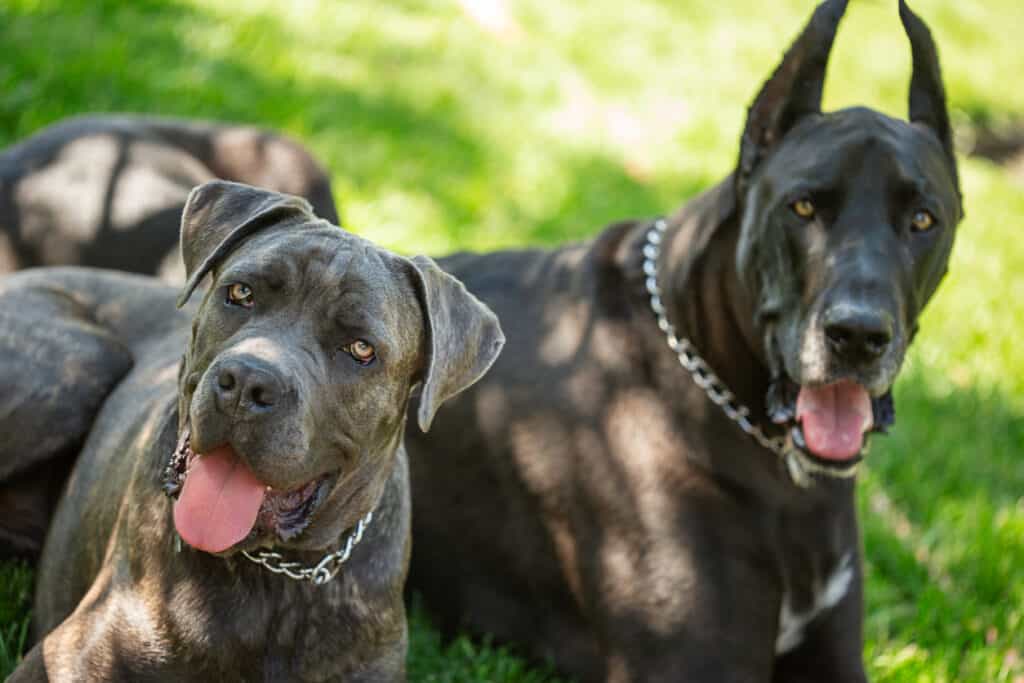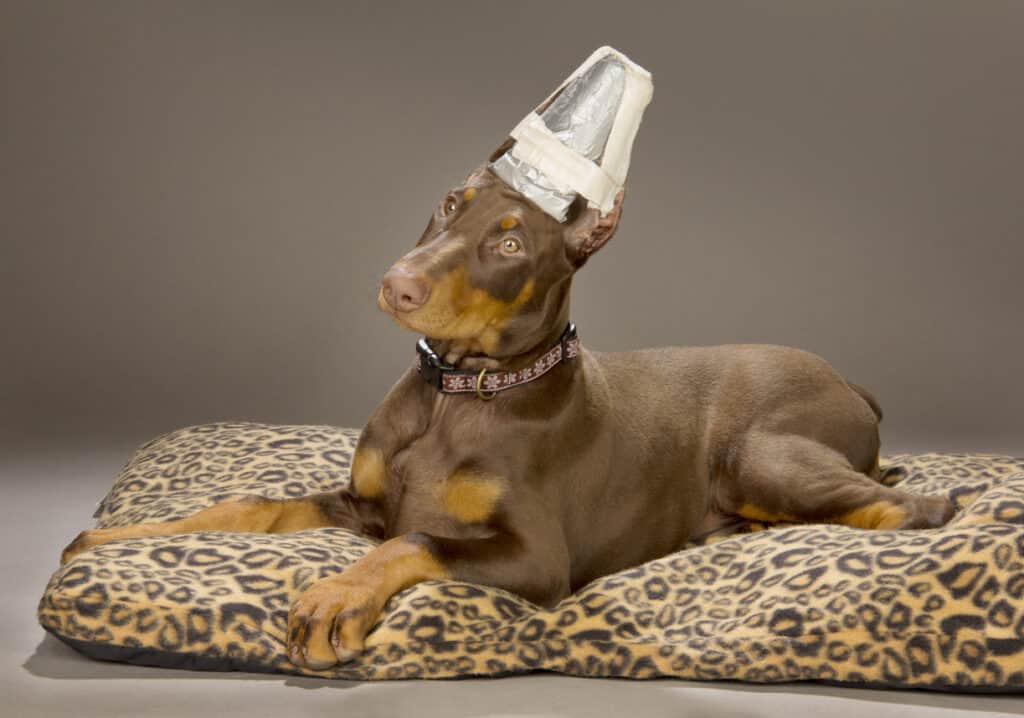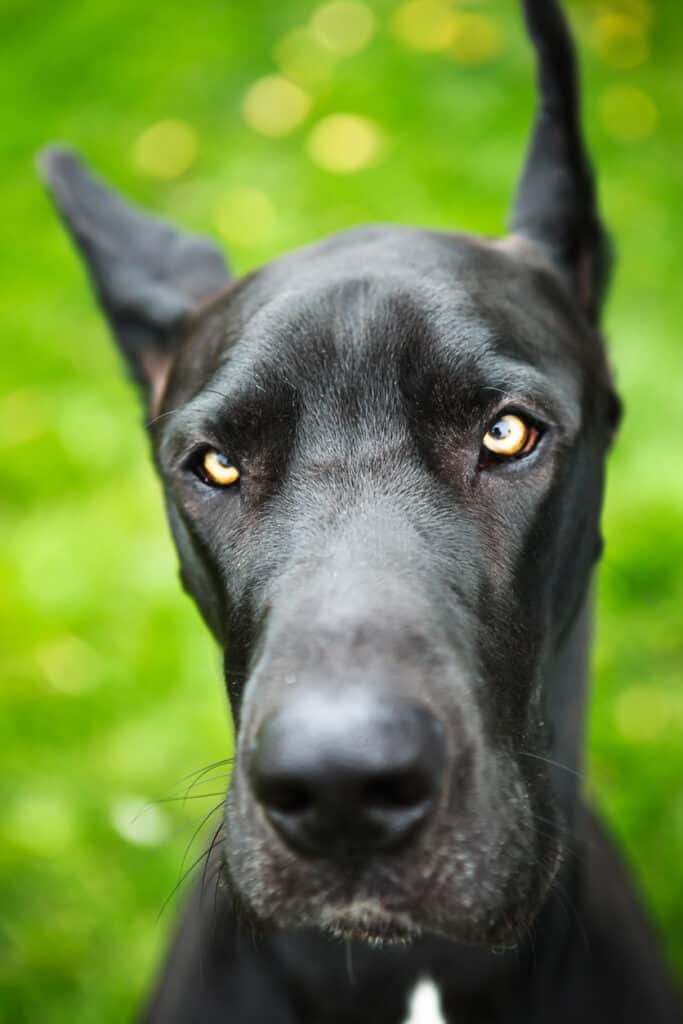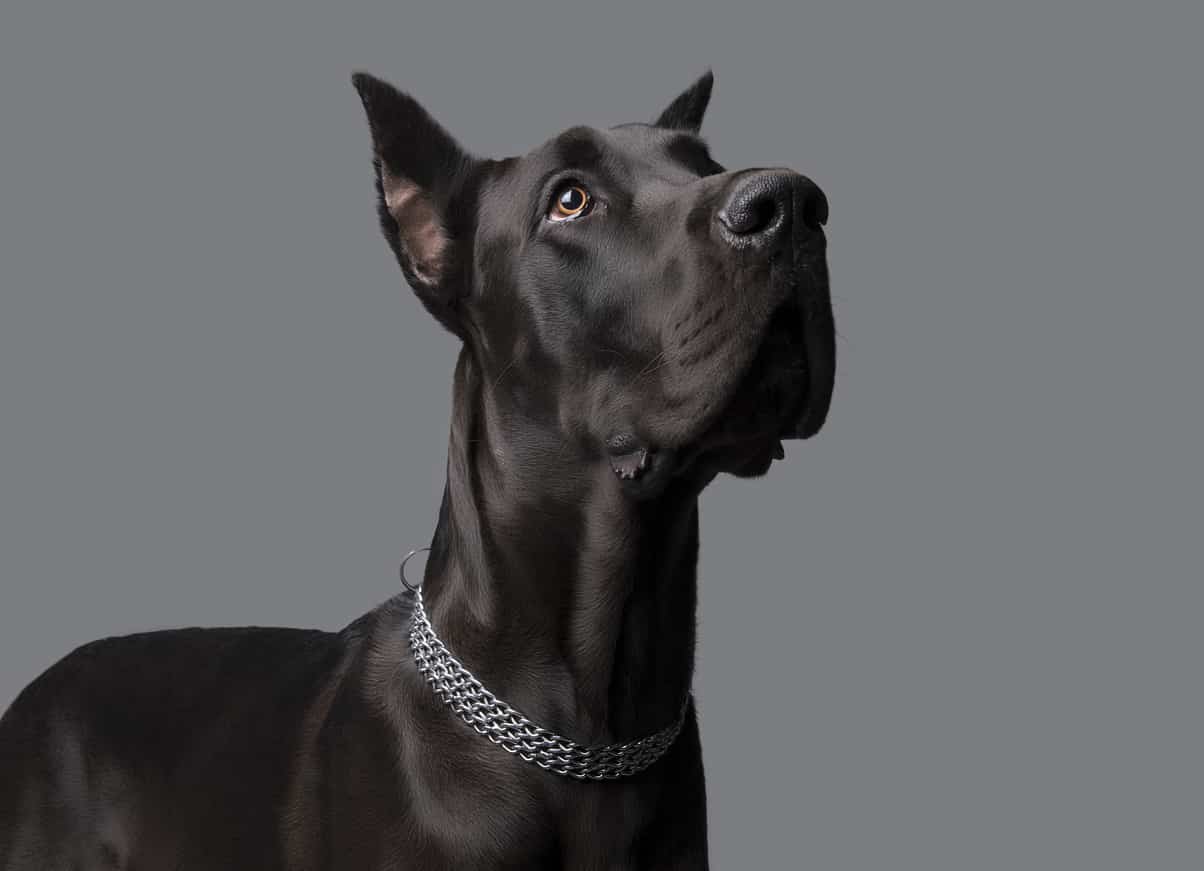Great Danes are extremely popular family pets today, but they have a complex and dynamic history. Often referred to as the “Apollo of Dogs,” these mighty animals used to chase and hold down boar in the forests of Germany in medieval times. This was a crucial role in the sport of boar hunting because the Great Dane was expected to hold the boar until one of the hunters arrived to finish him off. Hunting was such an important sport that dogs became absolutely integral to the success of a hunt, causing men to look at them in a different light.

Because boar hunting was so dangerous, Great Dane owners sought to minimize the risk to their animals’ lives by altering their physical appearance. Practices such as ear cropping and tail docking served as a means of reducing the likelihood that a Great Dane would be harmed on two of its more vulnerable external points. While this was “good” because it minimized the risk of harm to a Great Dane during a hunt, in hindsight the purpose which ear cropping was done for is not well-viewed. Today, tail docking is viewed similarly to ear cropping – as an inhumane, cruel, and unnecessary practice.
What is ear cropping?

Ear cropping is when part or all of a dog’s pinna is removed from the ear. The pinna consists of the visible portion of the ear on the side of the head and is comprised of the external auditory ear canal. The pinna plays an extremely important role in a dog’s ability to hear. The pinna is responsible for catching sound waves, amplifying them slightly, and then funneling that sound down into the ear canal to the eardrum. This process is typically performed on very young Danes – between 7 and 10 weeks of age. Their fragile age makes them natural points of contention for people who differ in their opinion with regard to whether ear cropping is inhumane or not. To some, it is a stylish choice that is regrettably required to occur before the puppy’s ears are unable to be reformed. For others, it is a barbaric practice that causes the puppies senseless pain.
Great Danes have sensitive ears and owners must either be willing to incorporate ear cleaning into their Dane’s grooming routine, or able to afford to pay a groomer to handle this less pleasant aspect of Dane ownership.
Naturally, Great Danes have soft, velvety, and floppy ears. Leaving ears natural allows the Great Dane’s body to naturally protect itself against irritants that would otherwise enter the ear canal. Unfortunately, if their ears are cropped, they can no longer prevent irritants from entering the canal and become much more susceptible to ear infections.
Additionally, cropping a Great Dane’s (or any dog’s) ears amount to limiting their range of hearing. The ear can no longer perform all of the functions it’s capable of when the ears have been permanently altered.
While aesthetic changes to Great Danes are steadily losing their popularity in the United States, there are some who believe that the look reflects a traditional Great Dane look. These opinions can be found among breeders, veterinarians, and show judges, but it is a reflection of the evolving times that within this same cohort of people are plenty of people who are staunchly against the practice.
Are there different styles of ear cropping?

Yes, there are several different “styles,” but it should be emphasized that the root of these styles involves an extremely painful and inhumane process that is potentially traumatic for the Great Dane. Below are three common styles of crop, within which owners may discuss personalization for their Dane:
Show Crop – this is a highly elaborate crop, longer and often with a little flare at the tip. It is the most difficult in terms of getting the aesthetic correct and getting the ears to reliably stand.
Pet Crop – this is a medium crop and is easier to care for. It is an excellent choice for novice Great Dane owners who have not experienced owning a Great Dane who underwent an ear cropping previously. In this procedure, the ear is cut shorter overall and may lack the artistic flare or regal look seen in a show crop.
Short Crop – most of the ear flap is removed and the final cropped ear is short and sturdy. This style is usually reserved for working dogs an has a historic application of minimizing risk to the ears while the dog was working.
Ear cropping is entirely about aesthetics, so if you’re dead set on paying thousands of dollars to put your Great Dane in pain for the result of cropped ears, at minimum owners should invest in an experienced practitioner. An inexperienced crop could result in an awkward or unbalanced overall look, much in the same way getting a bad nose job is immediately obvious to observers.
Some Great Danes simply don’t have the head or ear shape to support a proper ear crop. This is nature’s way of telling you that imposing cropped ears on your Great Dane is neither natural nor advisable. Some Danes are also not healthy enough as a baseline to undergo the involved and lengthy procedure.
Great Danes who get their ears cropped are in for a long recovery. The process requires anesthesia, which is highly discouraged in all but the most serious cases when it comes to canines. When a Great Dane is regaining its equilibrium after being put under for some time, it may exhibit drowsiness or act loopy, or even refuse to eat while the drug wears off.
When the anesthesia wears off, the owner’s mission becomes to prevent the puppy from licking and scratching at the sutures. Maintaining short and healthy nails here is absolutely essential as bleeding will naturally happen and your Great Dane will naturally be preoccupied with the site of the procedure. You will also have to be vigilant about preventing other dogs from licking the sutures, as this can cause the area to become infected and slow the initial healing period.
Many owners are unprepared for the amount of blood and mess that results from an ear cropping procedure. Although to some degree the immediate aftermath of the procedure is somewhat linked to the amount of experience held by the person performing the procedure, ear cropping always results in scabs and scar tissue that must be closely monitored and treated with Betadine.
Great Danes are especially susceptible to contracting ear infections are the procedure. Owners must be vigilant about noticing discharge, redness, heat, and swelling, and sometimes seemingly unrelated issues such as a slight fever, lethargy, and/or vomiting or diarrhea can occur as your Great Dane recovers from the procedure.
The recovery process is lengthy and during this time your Great Dane will likely communicate to you that it is extremely uncomfortable. Is may whine, pace, cry, shake its head, or scratch at its ears. Normally, your veterinarian will provide a pain medication, which should blunt some symptoms and help relieve your Great Dane of the urge to itch and touch its ears. Additionally, owners are advised to actively prevent their puppy from playing in water, receiving a bath, or rolling in the mud. As with any medical procedure, keeping your Great Dane calm and quiet will aid in the recovery process.
After an ear cropping procedure is performed, your veterinarian will schedule a follow up appointment to remove the sutures from your Great Dane. This appointment is typically scheduled for around 14 days after the procedure. During that time, your Great Dane puppy may be pitifully stuck in the infamous “cone of shame” depending on the degree to which they’re capable of leaving their fresh sutures alone. The sutures become progressively more itchy as the wound heals, making a prime target for Great Danes to itch.
After the sutures are removed, you as the owner still have several responsibilities to ensure that your Great Dane’s ear crop was not for nothing. Most importantly, the ears will need to be kept clean and dry, and a regular schedule must be established for changing bandages and posts. Posts function as a way to hold up the crop and encourage the ear to keep the shape given to it in-surgery. They also look quite ridiculous and give your Dane the appearance of having two tall, bandaged horns on top of its head. The act of posting is done to encourage the cartilage to set fully, which it will not do until approximately 5-9 months after the ear cropping procedure. This age range is large because it is dependent on the type of crop that the puppy receives.
A common mistake that afflicts Great Dane owners is to reliably post their Great Dane’s ears util it appears that the ears are supporting themselves without issue. Although ears may respond well to an ear cropping, in fact the ears will quickly regain their floppy and natural appearance if the owner is not consistent in posting them.
The success of an ear cropping procedure is largely dependent on how well the cartilage responds to the healing process. As the owner, you can encourage the cartilage to take the form encouraged by the precure by making noises and gestures that routinely cause your Great Dane’s ears to perk up.
How much does ear cropping cost?
The cost of ear cropping for a Great Dane varies greatly and is influenced by a number of factors. For one, location plays a role in that the more common the procedure in your area, the more likely that the reliable ear croppers are booked. Additionally, some veterinarians specialize in the procedure, but there are others who refuse to do it on moral and ethical grounds. Owners should be prepared to discuss at length why they want an ear crop because in both cases, the person performing the procedure will have questions and comments. Generally, a good ballpark estimate is to expect to pay around $500 for the procedure.
Hidden costs of ear cropping
Depending on how smoothly recovery goes, you may need to pay for additional trips to your veterinarian for pain relief medication for your dog and for them to assess how well your pup is recovering. There is also the “question mark” of sorts with regard to how carefully you will be able to regulate your young Great Dane as you post its ears throughout what the height of their growth and energy phase is typically. Generally, the goal should be to focus on raising a well-mannered Great Dane as you normally would, with special consideration for the state of its ears as the crop heals.
Finals notes on ear cropping
While public opinion is steadily shifting away from ear cropping and the practice has even become outlawed in Europe, it remains an option for Great Dane owners in the U.S. and Canada. As the owner, it’s important to weigh the decision carefully and to assess all available information available to you so that you an arrive at an informed decision and provide the best care possible for your Great Dane based on that decision. In particular, the most important aspect of ear cropping (or any aesthetic procedure that you elect for your Great Dane) will be the question of who performs the procedure.
There is a wealth of information and opinions on the topic, but the bottom line is that owners should seek out someone who is knowledgeable, extremely experienced, and prepared to candidly discuss what the procedure looks like in its aftermath. Honestly and forthrightness are key here, as they are in any professional relationship involving trust.


